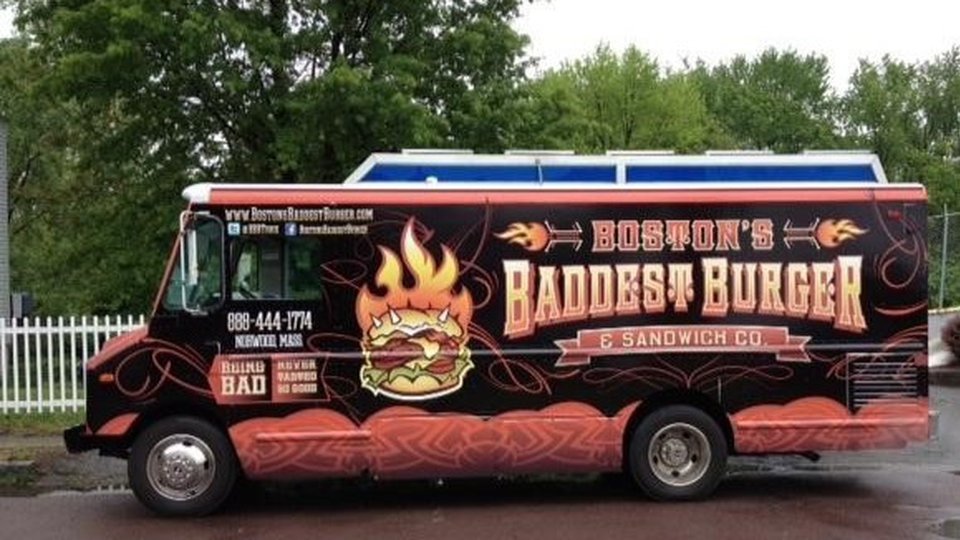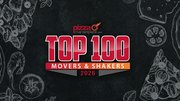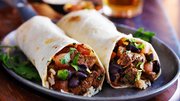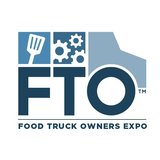Marketing
5 tips when wrapping graphics on food trucks
Graphics are one of the most important identifiers of a food truck business, and can be the make or break factor in the success of the operation.

July 3, 2023 by Paul Brewster — CEO, SpeedPro
Over the last decade, the U.S. has experienced a boom in the food truck market. In 2021, the U.S. food truck services market size was valued at $1.16 billion, and is expected to expand at a compound annual growth rate of 6.4% from 2022 to 2030, according to Grand View Research.
With a host of food truck options in any given city, how can food truck owners today ensure their food truck stands out from the pack? Perhaps the most obvious food truck entrepreneurs handle this challenge is by enhancing the truck with eye-popping, hi-resolution graphics.
Graphics are one of the most important identifiers of your food truck business, and can be the make or break factor in the success of the operation. With a high-quality vehicle wrap, you can cover your truck in branded, eye-catching graphics, but the first step in that process is laying out a killer design.
Balancing the need for attention-grabbing graphics, necessary information like your menu, and a design that matches your branding look and feel is a significant challenge for most food truck operators.
With that in mind, below are a list of tips to help you navigate the design and execution of your food truck wrap.
No. 1 Go big for visibility
If you want customers to eat at your food truck, you need to be able to draw them in from more than a few yards away. The best way to draw attention from a distance is to GO BIG. Large fonts and imagery is much easier and recognizable from a distance, especially if located high up on the truck. Often, people will identify your truck from within a large crowd of people, so putting it high on the truck can help ensure they can find you.
Readability is also critical, especially for the largest letters on the truck. Keep this in mind when choosing elements like the height, color, font and background for your truck's name, and make sure that any lettering placed on the truck contrasts well with the background. Check out the Best Practices Guide created by the Outdoor Advertising Association of America to see more options. According to the OAAA, designs with high color contrast improve outdoor advertising recall by 38%.
One way to boost visibility in this aspect is to use 3-dimensional lettering atop the truck. Whether 3D or traditional 2D, large letters are always a good idea. As for your font, consider big, bold, sans-serif styles that are easy to read. Small, ornate styles can negatively impact readability and ultimately your bottom line, so consider changing them if they are part of your existing brand.
2. Consider viewing angles
While food trucks spend most of their time parked in the same spot, it's also important to consider how the truck will look on the move or parked off-location. Driving time alone can expose your business to hundreds if not thousands of potential customers who may never otherwise drive past your location. When someone pulls up besides you at a stop sign, will they be intrigued enough to look you up?
The most important consideration is that your truck's design shouldn't be obscured by things like opening doors, windows or tailgates. If your design creates unintended imagery or blocks vital information like your logo or text, it isn't working as well for you as it could be and could also make it practically difficult for people to view your menu or order. All of the critical elements should be visible regardless of doors and windows, whether you're set up for business or have closed up shop for the day. Design your wrap with every configuration of your truck in mind.
 3. Keep it colorful
3. Keep it colorful
Whether you're stationed on a busy street or at a festival, bright colors can make your food truck stand out and easily recognizable in a large crowd. A well-executed brightly colored food truck can make yourself a landmark amid a sea of food truck options. Imagine telling a friend at a festival, "meet me at the bright orange truck."
Bold colors are important, but part of being bold means having discipline about your color choices and not overdoing it. Don't use a rainbow of colors that overwhelm the viewer and give them too much to look at.
Too many colors can clash and don't offer a strong match to your brand identity. Instead, select a few colors that work well together and are a part of your overall look, that also contrast well together.
4. Prioritize critical info
You've got your menu and your logo — what else do you need? For starters, contact information. Make sure your guests know where they can find you. If they're interested in your brand, most people will either Google you or look up your website to find your menu. If you don't have your URL on the truck, make sure it's clear what your name is and in which city or location customers can find you.
Many food trucks use social media to tell their customers where they're going to be. If that's true for you, make sure your social media tags are listed on your truck, alongside your website, phone number and anywhere customers can quickly look up what you serve in more detail. You may even want to include a physical address if your truck has a permanent location.
5. Make it memorable
If you can create a design that stands out in your customers' minds, you stand a better chance of turning them into repeat customers and improving their associations of your brand.
Don't be afraid to add personality to your design, or make it more provocative than what you're seeing on competitors trucks. Just because it's unique and loud, doesn't mean it's not professional or family-friendly. If you have a unique mascot or image, an exciting new concept, or a bold idea that will grab attention, boldness is better than blending in.
Photo image: Jozarelli's Italian Street Food truck wrap executed by SpeedPro. Courtesy of SpeedPro.
About Paul Brewster
Paul Brewster is an accomplished senior-level executive with an extensive business coaching background. Paul has an undergraduate degree in Business and a Master of Science degree in Management from Regis University. He is also a graduate of Georgetown’s School of Continuing Studies in Franchise Management, and holds the Certified Franchise Executive designation from IFA.







